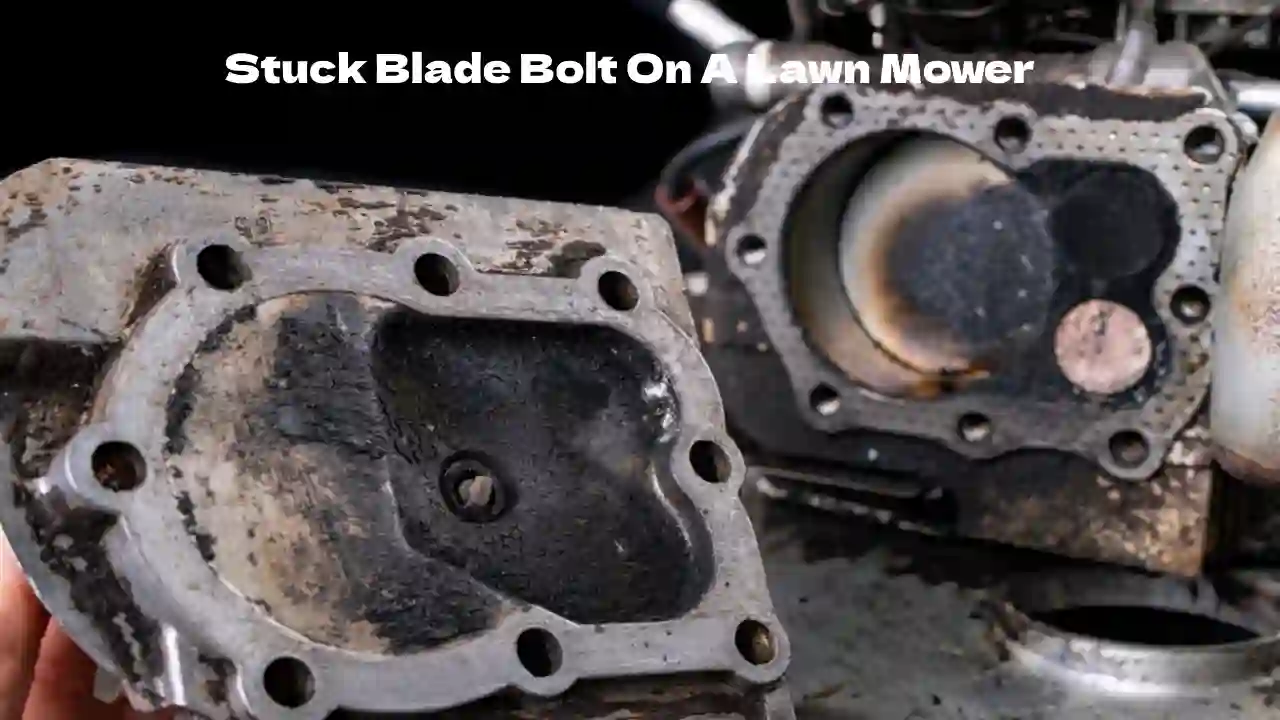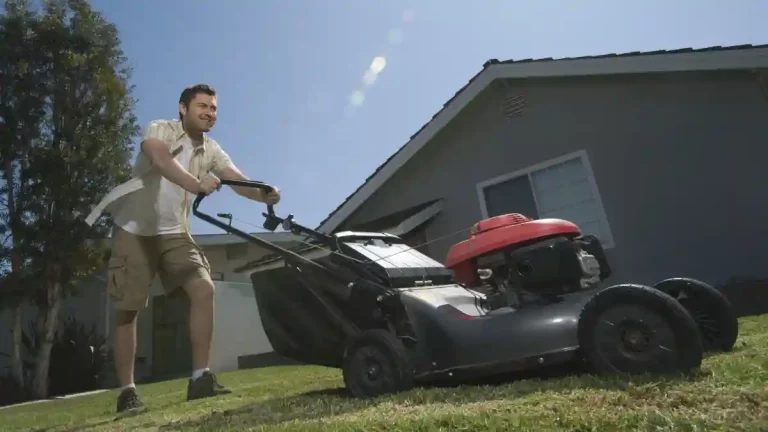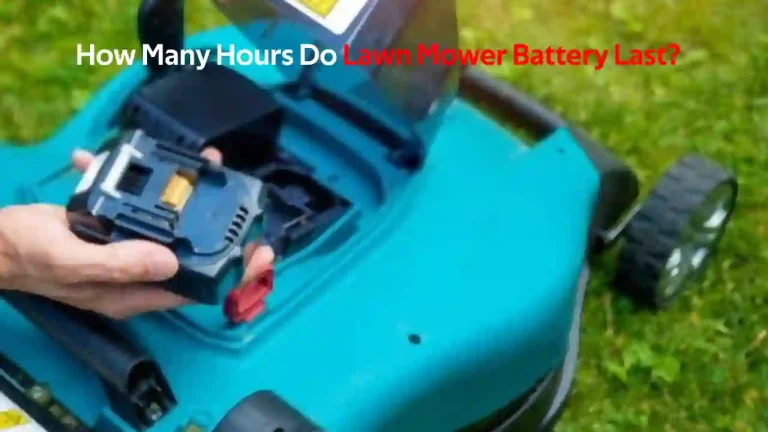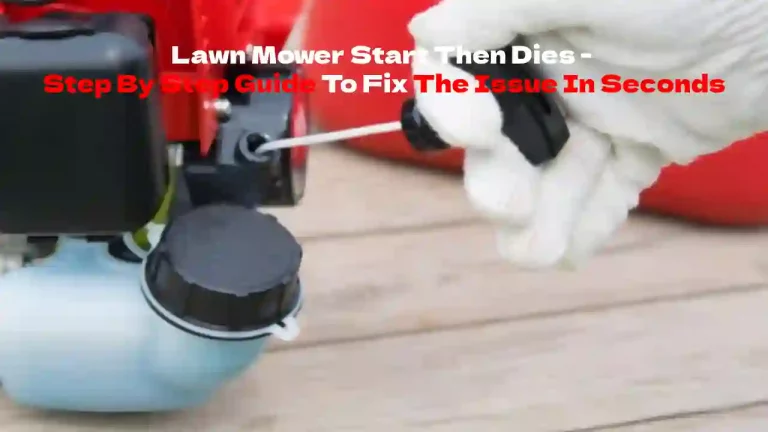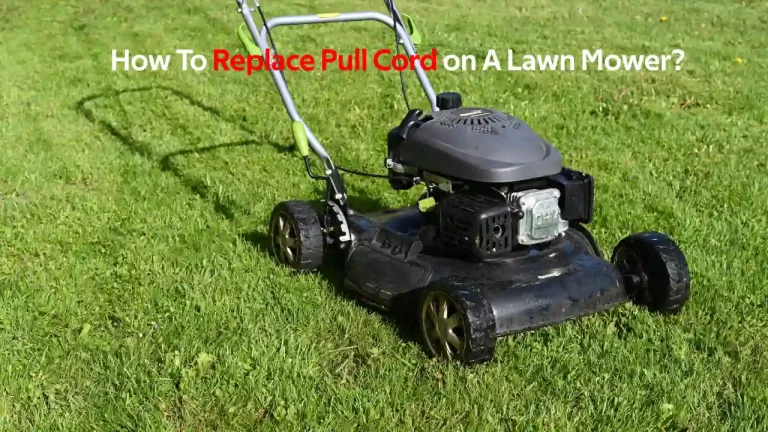Replacing the blade on your lawnmower is a fantastic way to make your mower cut like a new machine. Knowing this, you’ve gone out to buy a new blade, and you’re excited to see the difference on your lawn. But, unfortunately, you have to win the war against the blade bolt first to get the old blade off.
There are several options to remove a stuck blade bolt. The easiest method is to use an impact wrench. If you cant get your hands on one, you can use a socket tool with an extended bar, a vice grip, or a chisel and hammer. Heating up the bolt is also a good way of loosening it.
Knowing which options you have to remove that stubborn bolt can save you a whole lot of frustration.
However, you need to keep some of the safety risks involved in mind to avoid coming out the other end of the struggle missing a few fingers.
Why Lawnmower Bolts Get Stuck?
The best way to loosen a stuck blade bolt is to try and avoid it getting stuck in the first place.
Almost all lawnmowers will come with specifications on how tight a blade bolt must be. That being said, most blade bolts are over-tightened.
Add to that the bolt may tighten further with use and become corroded, and you are left with a rock-hard problem.
There is a way to avoid this by using three steps:
- Firstly, lubricate the bolt with WD40 before tightening it (I suggest regular lubrication after that).
- Secondly, use a torque wrench to avoid over-tightening the bolt.
- Finally, clean the bottom of the mower after every use. The moist grass that sticks to the bottom of the mower deck is the main contributor to corrosion.
If these steps weren’t taken, you would likely be left with a stuck bolt and the challenge of removing it.
Three Important Steps Before Removing The Blade Bolt
Before you even get to the actual task at hand, there are two essential steps you need to take to protect yourself as well as your lawnmower from unintentional damage. The final step will just make the process a little easier.
1. Disconnect The Spark Plug
Perhaps you are unaware that working underneath your lawnmower’s deck is really dangerous. Don’t be too surprised; you are not alone.
The lawnmower blade is connected to the engine via a drive shaft which means that when you turn the blade manually, you are also turning over the engine. However, turn it hard enough and you can actually create enough compression and spark to start the engine, costing you a hand.
As terrifying as that thought is, you can quickly mitigate the risk by disconnecting the spark plug cable. No spark means there is no way for the engine to accidentally start which you are turning the blade.
2. Drain The Fuel And Oil
This is an optional step, depending on which way you will tilt your mower to gain access to the blade bold.
Your lawnmower will likely have a picture on it or stipulate safe ways to tilt it in the manual. However, if you are unsure, just drain the fuel and oil.
For example, my lawnmower doesn’t like being tilted on its side because it allows for fuel to flow freely through the system and mix with the oil. Once the fuel has mixed with the oil, you run the risk of running the engine permanently.
Draining the fuel and oil before fighting with the bolt frees you to position the mower in the most comfortable and efficient position.
3. Clean The Bolt
Finally, with your spark plug disconnected and liquids drained, you can go ahead and tilt the mower.
The final thing you want to do before fighting with the bolt is to take a steel-wire brush and get that bolt as clean as possible.
After cleaning, apply some WD40, allowing it to drain into the bolt’s thread.
Removing Stuck Blade Bolt
With the preparation out the way, you are ready to work through the list of options to get the bolt free.
Option 1: Use An Impact Wrench
If you own an impact wrench of just about any type, your fight will likely be a short one. Provided that the bolt is not stripped, that is. Simply slap on the right-sized adapter, and you’re good to go.
If you are using an impact driver, and the power is a little lacking to get the bolt free, you may need to try some of the other steps on this list.
Option 2: Use A Socket Wrench And Extension Bar
The most common option in terms of accessibility to tools is using a socket wrench. However, if you don’t have a socket wrench, you can use a regular wrench (or spanner as we call them in South Africa).
Firstly, get a wooden block and place it between the blade and the cutting deck to secure the blade in place. You will need to set it so that when you are applying tension on the wrench, the blade doesn’t turn.
Most blade bolts have right-handed thread, meaning that you will need to turn it anti-clockwise to get it loose.
Next, you will need leverage to get that bolt off, and the standard length of a wrench handle is unlikely to cut.
If you have a breaker bar, you’re good to go. If you don’t, or if you’re not using a socket wrench, you can use a length of steel pipe. Slide the pipe over the wrench handle to lengthen it and give you leverage.
Option 3: Use A Vice Grip
If the bolt is slightly stripped, or if you can’t find a pipe for leverage, the vice grip option may be the best for you.
All you need to do is attached the vice grip to the bolt as firmly as possible. Then, using a hammer (preferably a rubber mallet), tap the end of the vice grip to turn the bolt in an anti-clockwise direction.
As soon as the bolt starts to turn, you can go back to the socket wrench.
Option 4: Use A Hammer And A Chisel
If even the vice grip option fails, and you have a pretty severely stripped bolt head on your hands, you can try using a hammer and a chisel.
Place the chisel on top of the bolt (on the side you want to turn the bolt). In other words, if you need to turn the bolt anti-clockwise, you need to place it on the top left corner when viewed from the front.
Hold the chisel in place and tap it with the hammer to dig into the bolt and, if successful, loosen it.
Option 6: Weld An Additional Bolt
If the blade bolt is too stripped and refuses to budge with the chisel, your last option is to weld an additional bolt onto it. This bolt will give you a non-stripped head where you can get a grip.
Just be aware that you need to do a proper job with welding. You don’t want the new bolt to break off, and you also don’t want to accidentally tack the blade bolt onto the blade.
Bonus Tip: Use Heat
Along with any of the above options, you can also use a blow torch to heat up the bolt, which will help a great deal to get it to loosen up.
Here is a video showing all the options you have at your disposal:
Conclusion
Having a seized-up and corroded blade bolt can be a real headache to loosen, but fortunately, there are several tricks available. If a traditional wrench fails, you can use a vice grip, a hammer-and-chisel, or even weld on an additional bolt for increased grip.
However, I advise that you care for your lawnmower in such a way that you prevent corrosion around the blade bolt, making it easy to remove the next time you need to swap out the blade.
Want to change lawn mower deck, don’t know how, check this post out.

